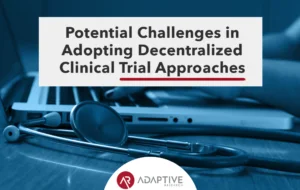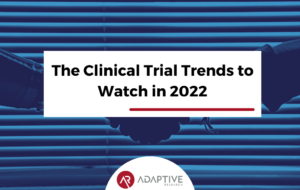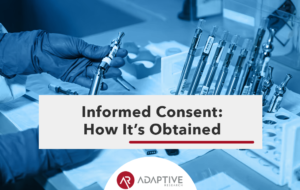Clinical trials are very layered, and with those layers come various costs to weigh. Because of all the elements involved, mapping out exact budgets for trials can be challenging. Planning for unexpected costs is just as vital for clinical trials, especially when you account for factors such as:
- Slow enrolment
- Amendments to various protocols
- Various contingencies
For all parties involved in a clinical trial to achieve a successful clinical trial, creating a budget that considers both the planned and unplanned costs is important, requiring diligent financial planning and structure. Clinical research organization (CRO) service costs and pass-through costs, as well as the regulatory authority and licensing costs, are among the various cost drivers you must consider that determine the success and failure of a clinical trial.
Costs Involved In Creating a Clinical Trial Budget

The average clinical trial budget ranges from $4 million at phase one to $20 million for phase three. Typically, a clinical trial budget is broken up into two main parts: the CRO service costs and pass-through costs.
Pass-Through Costs
The pass-through costs are expenses passed directly to sponsors at the actual cost. These costs include site and grant fees, fees that are paid to principal investigators, and sites for patient recruitment, with these costs usually comprising the largest aspect of the clinical trial budget. The site costs also include administrative costs, any fees for adding or removing trial sites, as well as site overhead, and storage fees to house trial records.
Another key cost driver among pass-through costs is travel costs. Travel costs could make up a substantial part of the clinical trial budget depending on study design and requirements, such as on-site monitoring frequency and where the site is located. If trials are planning to conduct multinational studies, there may also be currency fluctuations affecting budgeting. These influential travel costs can be hard to plan for or adjust to, especially if currencies fluctuate regularly.
Then, there are the regulatory fees. These fees include the costs involved with trial report submissions to the appropriate regulatory authorities, as well as clinical registration. Also, factor in both regulatory fees and patients insurance that directly depends on sample sizes, the phase of the study, and the geography of the study.
Questionnaire license fees should also be accounted for when evaluating the pass-through costs of a clinical trial budget, plus any bank commission and taxes based on local requirements. CROs should double-check these commissions and taxes before proceeding with their trials.
CRO Service Costs
Site management and monitoring costs account for the largest part of a clinical study budget, with the structure of service fees being high. Monitoring fees, including for site initiation visits, interim monitoring, and close-out visits, will depend on the sample size for the trial and any sponsor requirements towards source data verification percentage.
Data management costs are also key costs affecting budget planning. These costs largely depend on how many patients and sites are involved in the clinical trial. Add to these costs the complexities of case report forms (CRFs), forms that depend on how many study procedures are involved, as well as the study’s duration. Then, there are project management costs that also depend heavily on the duration, number of subjects involved, and complexity of the trial.
Furthermore, there are medical writing costs to consider. Though these costs are lower, in most cases than other clinical project costs, the work of medical writers and biostatisticians should never be underestimated as their work is crucial to project success. That importance ties in their decision-making regarding the approval of studies and clinical trial efficiency with properly prepared clinical designs.
Other key CRO service costs to keep in mind include:
Regulatory Support and CTA Submission Costs – Addressing geographical constraints as aspects like the CTA process, submission package requirements, and accreditation differ depending on location.
Logistics Costs – Clinical research organization support in coordinating drug imports and shipments, plus study supplies and biosamples.
Quality Assurance Costs – These costs are spent on the maintenance of quality assurance and quality control systems, plus training and audit expenses. Though these costs are vital, they represent a smaller portion of a clinical trial budget.
What Should Be Done if Contingencies Take Place?

Because some of the variables involved with organizing clinical trials take time and are impacted by certain restrictions, there is always the possibility of scope creep occurring, meaning that the amount of work and time required for the trial exceeds original expectations. Preparing for out-of-scope for clinical trials is essential as uncontrolled changes and continuous growth occur. While these might seem like factors that are completely out of the control of trial organizers, scope creep in clinical trials often happens through a lack of a proper definition or documentation.
Project managers should be prepared to outline potential scope creep to sponsors, showing high professional competence and a strong individual client approach, winning more trust throughout the process. Also, depending on how the enrolment process unfolds at each site, monitoring frequency can be lowered and longer breaks established between site visits, reducing travel costs along the way.
Another way to plan for contingencies is to establish realistic expectations. Early in the clinical trial project, realistic yet conservative expectations for investigational site factors should be considered, driving the required time to complete all project objectives. Additionally, more time should be spent on the front end estimating any potential site issues and time management variations. During the site qualification phase, more understanding of practice volumes of target patient populations should be evaluated—also, well-planned fee structures aid budget optimization.
Clinical trial budget optimizations prepare all parties involved in clinical trials to prepare for the unforeseen and better understand the scope of their projects, encouraging more participation from physicians, sponsors, and patients alike. At Adaptive Partners, we team up with community physicians to integrate clinical trials into their practices to provide new opportunities for the patients they recruit. Learn how we do this through our various solutions.






